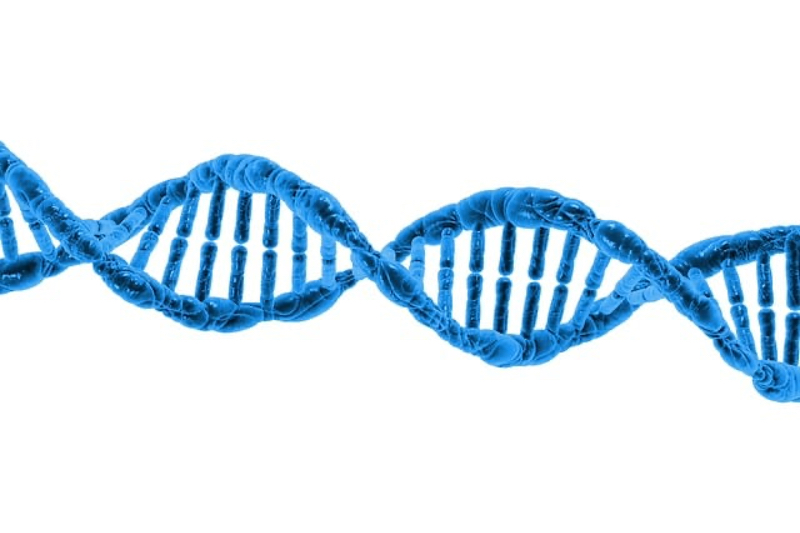Currently, these types of drugs are used to treat conditions such as diabetes, obesity and cardiovascular disease — with their applications continuing to expand into other therapeutic areas. Consequently, peptide API manufacturing has had to undergo a radical industrial intensification to drive efficiency, improve quality and lower costs.
To achieve this at a commercial scale, peptide APIs can either be produced via synthetic or recombinant synthesis. Both methods can offer unique perks and drawbacks, so it’s vital to ensure that manufacturers are fully aware of the strengths and limitations associated with each approach.
This enables them to make informed decisions when selecting an appropriate method for their production needs.
Recombinant peptide synthesis
Recombinant peptide synthesis uses genetically engineered organisms such as yeast, bacteria or mammalian cells to produce peptides. To achieve this, the DNA sequence that encodes the desirable peptide is inserted into the genome of a host organism — generally via a plasmid or other vector.
The inserted segment of DNA will then instruct the host organism to produce the sought-after peptide as it naturally grows and divides.
During this technique, the host organism translates the recombinant DNA into a peptide chain, often allowing the cell to perform post-translational modifications such as phosphorylation, glycosylation and disulphide bridge formation. These modifications are intrinsic to the functionality of many biologically active peptides, meaning that this method facilitates the production of
functional proteins. 
Once the peptides are produced, they are subsequently harvested from the culture medium or cell mass and purified to remove any contaminants and undesirable by-products.
Recombinant technology produces peptides with complex tertiary structures and specific post-translational modifications
The perks of the recombinant method
Some advantages of the process include the following:
- Less costly for large-scale production: Recombinant synthesis is more cost-effective at scale than its synthetic counterpart as the culture media required is significantly cheaper than synthetic amino acids. Therefore, it’s a useful way to produce large volumes of peptides in industrial processes.
- Facilitates 3D protein folding and post-translational modifications: Recombinant technology can produce peptides with complex tertiary structures and specific post-translational modifications, which can be necessary for biological activity and drug efficacy. Better sustainability profile: Utilising biological systems will reduce chemical waste and energy consumption compared with synthetic processes, thus promoting green manufacturing principles and reducing the environmental impact of the process. However, the purification process may reduce these benefits.
- Long-chain peptide production capabilities: Compared with synthetic methods, such as solid-phase peptide synthesis (SPPS), the use of biological organisms and their ribosomal machinery makes recombinant polypeptide synthesis extremely efficient, even at chain lengths of hundreds of amino acids.
Introducing peptide sequences via (the recombinant) method may result in an unwanted immune response
The challenges associated with the recombinant method
Although there are significant benefits associated with recombinant synthesis, there are also issues that come with the process:
- Complex purification requirements and impurity profiles: Impurities such as host cell proteins and nucleic acids require robust downstream processing, which is both costly and technically challenging; this can reduce the overall process efficiency.
- Immunogenicity and biological contamination risks: Introducing novel peptide sequences via this method may result in an unwanted immune response in patients, which has the potential to inhibit the efficacy of the produced peptides.
- Lengthy development cycles: Creating and optimising such peptides, as well as scaling-up their fermentation, requires a prolonged effort, which can delay the initial production phase. Modifications difficult to accommodate: Chemical modifications such as backbone stabilisations, artificial amino acids or unusual side-chains are rarely suitable for accommodation owing to their complexity.

Synthetic peptide synthesis
Synthetic peptide synthesis refers to the process of constructing peptides without the use of a biological organism. This involves the sequential linking of amino acids through a series of chemical reactions, including techniques such as solid and liquid-phase peptide synthesis (SPPS and LPPS, respectively).
During SPPS, a peptide is assembled atop a solid support — usually a resin. Each amino acid is added sequentially to the growing peptide chain, with cycles of coupling and deprotection taking place until the desired sequence is complete.
This method can include the incorporation non-natural amino acids, as well as various modifications, allowing for precise control of the peptide’s sequence and composition.
Synthetic peptide production facilitates the inclusion of non-natural amino acids
The advantages of a synthetic approach
- Easy protein modification: Synthetic peptide production facilitates the inclusion of non-natural amino acids, as well as a range of biochemical probes. This method is particularly suitable for incorporating post-translational modifications that increase peptide functionality, stability or bioavailability.
- Automation, scalability and speed: Automated SPPS allows for a rapid turnaround in peptide production. The simplicity of scale-up with this technique is also beneficial. No biological contaminants: Synthetic synthesis doesn’t require the involvement of host organisms, meaning there is no risk of contamination with harmful biological agents, including viruses or prions. This streamlines the regulatory compliance process — particularly concerning BSE and TSE safety.
- High-quality peptides with known impurities: Synthetic manufacturing methods promote a high degree of control regarding the peptide’s composition and purity, reducing variability between batches.
Synthetic synthesis ... can significantly enhance the negative environmental impact of peptide production
Drawbacks of synthetic synthesis
- Material complexity and cost: The starting materials, such as synthetic amino acids, specialised resins, reagents and instruments, are costly Complexity of scale-up and process optimisation: Enhancing production scale can result in variations in mixing efficiency, temperature control and the timing of reactions, which can affect the final product’s yield and purity. Such scale-up challenges require significant process development and optimisation, which can increase commercialisation time and costs.
- High organic solvent waste: Deprotection, repetitive coupling and washing steps are heavy on resource usage and can create a significant amount of solvent waste. To mitigate these impacts, companies must employ advanced waste management techniques, which increases costs and process complexity further.
- High process mass intensity: Synthesis and purification have the most notable impact on process-mass-intensity, which acts as a metric for sustainability. Using this process, if not accounted for in mitigative strategies, will significantly enhance the negative environmental impact of peptide production.
- Longer peptides can be prone to errors: Synthesising peptides longer than 50 amino acids can result in lower reaction yields and a higher chance of sequence errors or misfolding.
Working in tandem for next generation API manufacturing
To be successful when developing and commercialising novel peptide drugs, pharmacokinetic challenges such as molecular stability, bioavailability, half-life efficacy, renal clearance and a low immunogenicity profile must be overcome.
The growth of peptide complexity and the industry desire for increased processing speed gives chemical synthesis an advantage, making it the best choice for those manufacturing next-generation drugs.
The synthetic route is particularly effective at producing stable molecules, which is especially useful when trying to formulate patient-centric oral dosage forms. It also allows manufacturers to produce peptides in a shorter timeframe, reducing the time to market to meet growing demand.
Technological innovations such as soluble-anchor-based molecular hiving for synthesis, as well as MCSGP for continuous purification, promote the scalability of commercial production, making chemical synthesis an increasingly attractive option for pharmaceutical companies.
Hybrid solutions for the best of both worlds
When deciding whether synthetic or recombinant peptide synthesis would best fit your manufacturing needs, several factors must be considered: the peptide’s complexity, production volume, cost and development timeline.
However, new hybrid or semisynthetic approaches can offer promising steps forward in harnessing the best of both worlds. This type of manufacturing strategy utilises partially recombinant, partially synthetically produced (or modified) peptide fragments that get ligated or conjugated into the full-length complex API.
These methods offer a welcome addition to the growing toolkits of drug manufacturers while also offering greater flexibility and efficiency. Utilising a hybrid model allows for the efficient and reliable production of synthetic peptides on an industrial scale.
It also allows the product to be further modified in a site-specific manner through chemical synthesis or genetic code expansion to enhance their stability and physiological activity.
